Life in the Submarine - The Mill Hill Missionaries
Life in the Submarine - The Mill Hill Missionaries
Life in the Submarine - The Mill Hill Missionaries
- No tags were found...
You also want an ePaper? Increase the reach of your titles
YUMPU automatically turns print PDFs into web optimized ePapers that Google loves.
my native Holland. Our only means of contact with <strong>the</strong> outside world was aonce daily radio call which l<strong>in</strong>ked <strong>the</strong> various mission stations with each o<strong>the</strong>rand with <strong>the</strong> largest village <strong>in</strong> <strong>the</strong> diocese, Basankusu. <strong>The</strong> Procure <strong>in</strong>Basankusu was <strong>the</strong> only place with equipment powerful enough tocommunicate directly with K<strong>in</strong>shasa and from <strong>the</strong>re with Europe. <strong>The</strong> postalservice was erratic at best and letters would take weeks, sometimes months toarrive.To counterbalance this feel<strong>in</strong>g of isolation <strong>the</strong>re was an excellent spirit ofcamaraderie among <strong>the</strong> 30 odd <strong>Mill</strong> <strong>Hill</strong> missionaries <strong>in</strong> <strong>the</strong> diocese ofBasankusu, but mission stations were few and far between. Basankusu was ata distance of 80 kms from Waka and Bar<strong>in</strong>ga, <strong>the</strong> next station <strong>in</strong> <strong>the</strong> o<strong>the</strong>rdirection, was even fur<strong>the</strong>r away. Transport <strong>in</strong> <strong>the</strong> ra<strong>in</strong>forest is difficult at <strong>the</strong>best of times, but downright impossible <strong>in</strong> <strong>the</strong> ra<strong>in</strong>y season. <strong>The</strong>re was not onesquare centimeter of tarmac <strong>in</strong> <strong>the</strong> whole of <strong>the</strong> diocese, few properlyconstructed bridges over <strong>the</strong> numerous rivers and streams, and unreliableferries at <strong>the</strong> large river cross<strong>in</strong>gs. Bishop Cornelio de Wit, our one timeSuperior General, famously remarked on his only visit to <strong>the</strong> diocese: “Yourexistence here is like liv<strong>in</strong>g <strong>in</strong> a green submar<strong>in</strong>e” – with a reference to <strong>the</strong>famous Beatles song ‘We all live <strong>in</strong> a yellow submar<strong>in</strong>e’ which was popular at<strong>the</strong> time.But physical isolation was butone element of what developed<strong>in</strong>to an experience of cultureshock ‘squared’. <strong>The</strong> <strong>in</strong>abilityto communicate adequatelywith <strong>the</strong> people aroundbecause of not speak<strong>in</strong>g <strong>the</strong>language was hugelyconfrontational. I have neverfelt so helpless <strong>in</strong> my life. Smallkids would po<strong>in</strong>t at this‘bondele’ – white man - <strong>in</strong> utterastonishment say<strong>in</strong>g: “He is agrown man and does not know how to speak, and we are only kids. Ourlanguage is so easy – even we, kids, can speak it!” Mar<strong>in</strong>us Boonman, mymentor, was an excellent speaker, but had little <strong>in</strong>cl<strong>in</strong>ation to teach. For mypart, I soon discovered that my preferred method of language learn<strong>in</strong>g was touse a grammar so as to be able to understand <strong>the</strong> structure of <strong>the</strong> language.As luck would have it <strong>the</strong>re was a Lomongo grammar available and an excellent


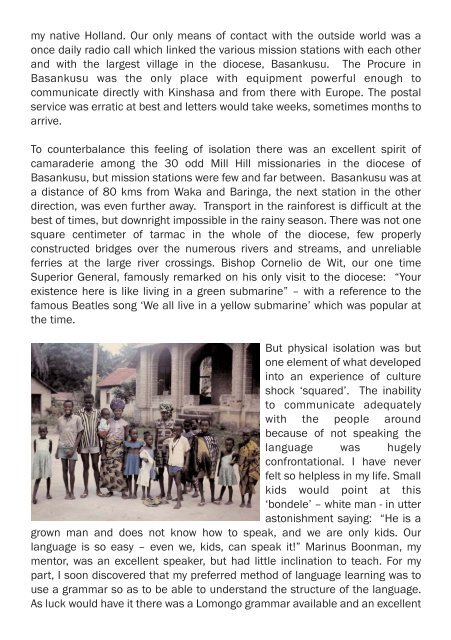

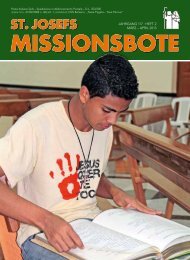
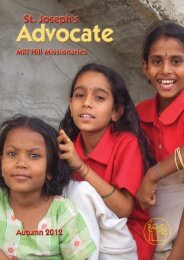
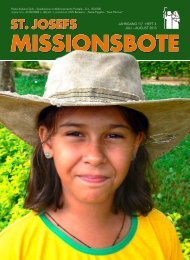

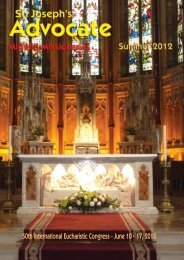
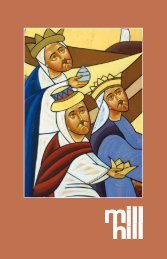
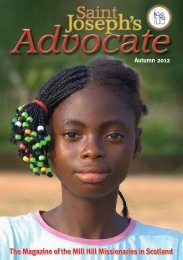

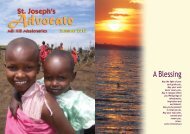
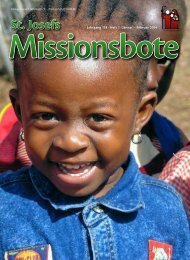
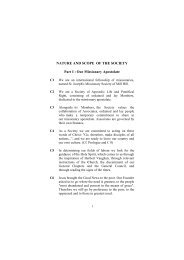

![Summer 2012 [pdf] - The Mill Hill Missionaries](https://img.yumpu.com/43011464/1/184x260/summer-2012-pdf-the-mill-hill-missionaries.jpg?quality=85)